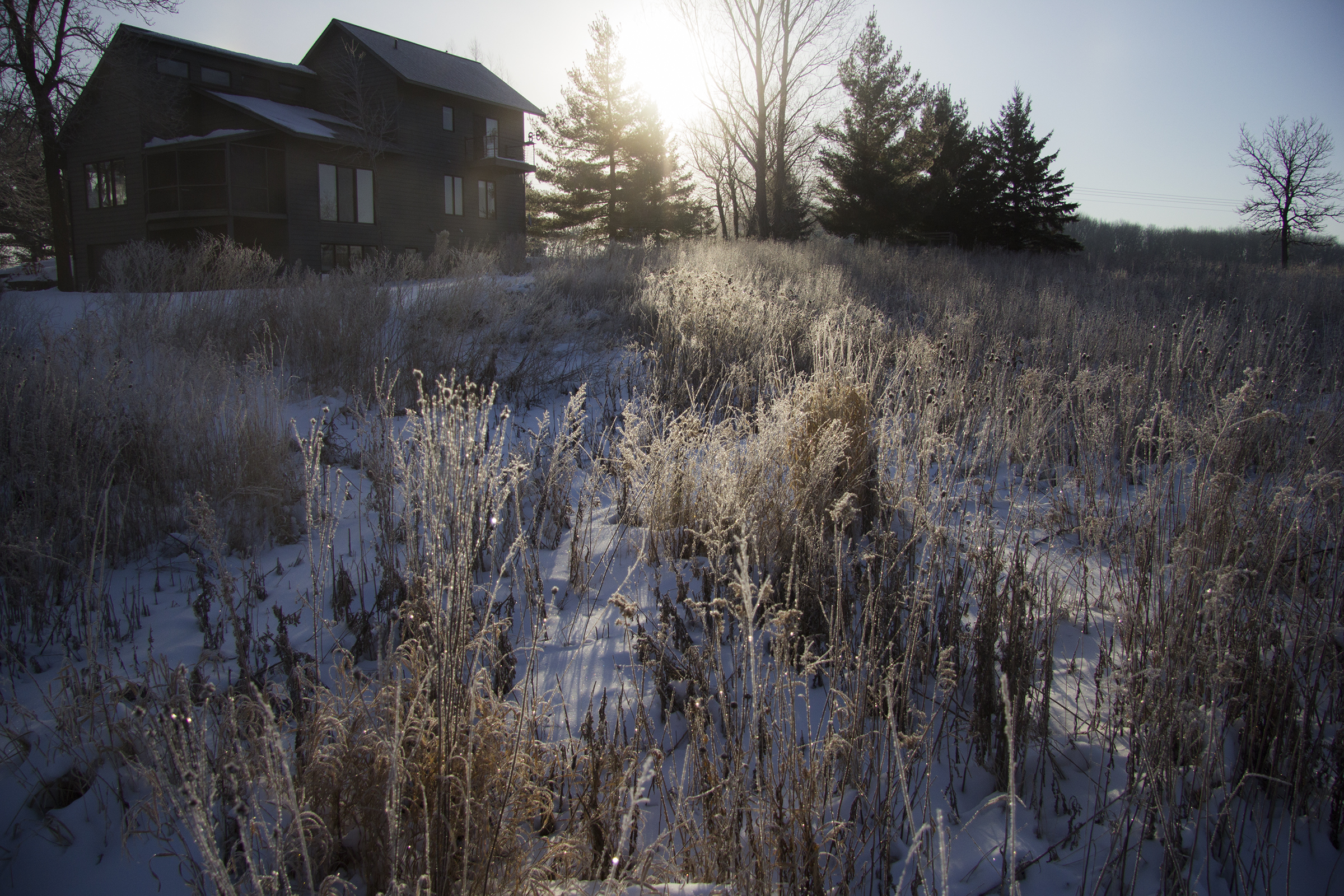With more and more land being developed for one purpose or another, and more farm land being put into production, pollinator habitat has been in decline. We've been restoring our 80 acre farm to native plants for some time now, and there have always been monarchs. Like many, however, we've noticed a decline in monarch presence over the last ten years. But this year we saw an increase in monarch activity.
I took this photo a couple weeks ago when the Stiff Goldenrod was in full swing. Had I taken a close-up photo, you would see that these plants were not only full of monarchs, but bees as well. you can see the bees on the flower toward the bottom of the screen.
For the first time in a long time our grove, made up of Norway Pine and Spruce trees, was full of monarchs. By full I mean thousands of them, all flitting about as one walked through the grove. They gathered and rested about two weeks before flying south on the grand migration to Mexico.
Though at a distance, you can see the branches of this spruce tree full of monarchs, hanging like bats in the shade of the grove.
We have been growing wildflower and grass plugs in the greenhouse now for two years, and have been plugging them into existing prairies and into newer prairie plots. The advantage of beginning a prairie from plugs instead of seed is that we can design it , creating swaths of particular colors and transitioning into other colors.
This is part of a larger project in which the homeowners are restoring their property to woodland natives, all which will be done by seed. But this plot, which is highly visible, we decided to do with plugs. We put down several inches of sand to suppress weed growth and to put the plugs into.
The homeowners know that these will need to be watered for four weeks or so. But after that the plugs will have rooted into the soil below and will do well on their own.
Here is another project where we removed all the old landscaping and replanted the area with plugs Conventional landscaping, with its landscape fabric and mulch, is doomed to eventual renovation for two reasons: plants don't do well when their roots are covered with fabric, and cultivars (or hybridized plants) generally cannot reproduce themselves. As a result, over time, the vegetation of conventional landscapes get thinner and thinner.
By inserting approximately 1.25 plugs every square foot, we saturate the area with natives, which should out-compete the weeds and will eventually reproduce themselves, filling up the area with native vegetation.
One side note: Another activity of August is checking on prairies that we seeded in the last couple years to see how they're doing. It is always very satisfying to see a plot that has come in well. The photo below is of a woodland restoration that we seeded in the spring of 2016. Here we are, in its second summer of growth, showing a flush of Brown Eyed Susans and Blue Bells, two flowers that complement each other nicely.














